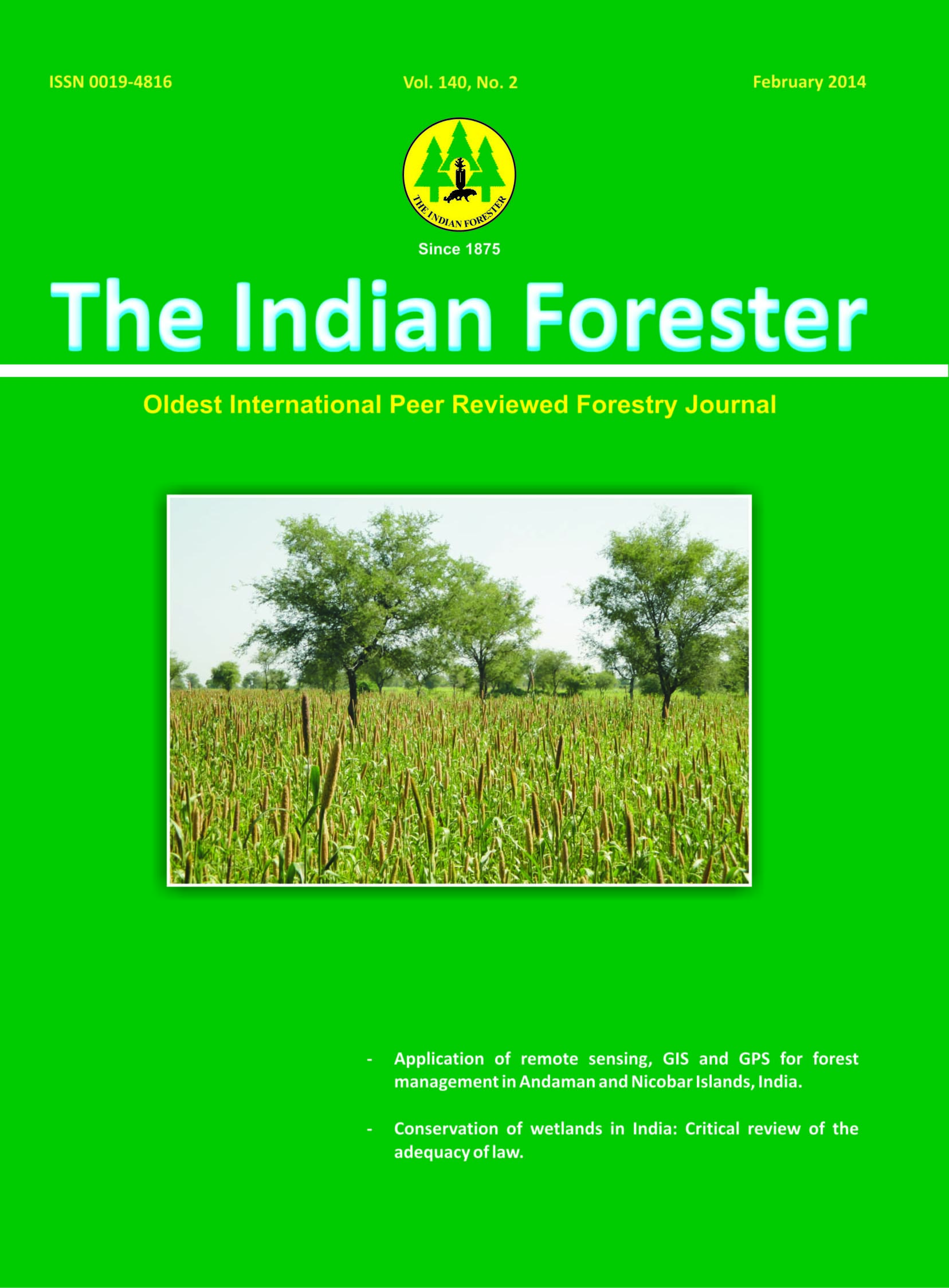Conservation of Wetlands in India: Critical Review of the Adequacy of Law Suresh Chandra Gairola
DOI:
https://doi.org/10.36808/if/2014/v140i2/46803Keywords:
Wetlands Conservation, Adequacy of Laws, Community Participation, Decentralized Management.Abstract
This paper discusses the status, various laws, regulations and policies, and legal perspective of wetlands conservation in India. The adequacy of existing wetlands conservation laws in India is analysed and suggestions for improvement in conservation initiatives are made. India has a robust framework of laws and policies governing wetlands conservation. High quality research has been done at various governmental and non-governmental institutions. However, considering the magnitude of the efforts needed to conserve wetlands due to ever increasing pressures and treats, the paper argues that existing legal and institutional framework is not adequate to conserve the vital wetlands resources in the country. A large extent of wetlands has been excluded from the existing regulation net exposing them to overexploitation and consequential degradation. Community participation in conservation initiatives at local and regional level need to be strengthened by developing a long term stake. Issues of fair and equitable sharing of resources through sustainable utilization hold the key for wetlands conservation in India.References
Anon. (2007). Conservation of Wetlands in India: A Profile (Approach and Guidelines). Ministry of Environment and Forests, Government of India, New Delhi.
Anon. (2009). National Wetland Conservation Programme: Guidelines for Conservation and Management of Wetlands in India. Ministry of Environment and Forests, Government of India, New Delhi
Anon. (2010a). Conservation and Management of Lakes-An Indian Perspective. Ministry of Environment and Forests, Government of India, New Delhi
Anon. (2010b). Wetlands (Conservation and Management) Rules, 2010. Ministry of Environment and Forests, Government of India, New Delhi.
Anon. (2011). Wetland Inventory and Assessment.Space Application Centre, Indian Space Research Organization, Ahmedabad.
Anon. (2012a). Ramsar Convention Bureau, http://www.ramsar.org (Last accessed in January, 2013)
Anon. (2012b). Protected Area Network in India. Ministry of Environment and Forests, Government of India, New Delhi. http://moef.nic.in/downloads/public-information/protected-area-network.pdf (accessed on 5 January 2013).
Gopal, Brij (1995). Handbook of Wetland Management. World Wide Fund for Nature-India
Gopal, B. (2009). Biodiversity in Wetlands, In : The Wetlands Handbook (E. Maltby and T. Barker Ed.), Wiley-Blackwell, Oxford, UK.
Prasad S.N., Ramachandra, T.V., Ahalya N., Sengupta T. ,Alok Kumar, Tiwari A.K., Vijayan V.S. and Vijayan Lalitha (2002). Conservation of Wetlands of India – A Review. Tropical Ecology 43(1): 173-186. International Society for Tropical Ecology.
Ramachandra, T.V. (2011). Restoration and Management Strategies of Wetlands in Developing Countries. Electronic Green Journal, 1 (15). UCLA Library, UC Los Angeles, USA. Available at http://escholarship.org/uc/item/22f875tq (accessed on 6 January 2013).
Stetson, Leah (2007). Wetlands and Global Climate Change. Wetland News, February 2007, Association of State Wetland Managers, Inc. Windham, ME, USA.
Whitten, S. and Bennett, J. (2005). Managing Wetlands for Public and Social Good, Cheltenham: Edward Elgar New Horizon in Environmental Economics Series.
Woistencroft, James A., Hussain, S.A. and C.K. Varshney, (1989). A Directory of Asian Wetlands. IUCN Publication. http://www.iwmi.cgiar.org/wetlands/WetlandDir2.asp (accessed on 6 January, 2013)
Zafar-ul Islam, M. and Rahmani, Asad, R. (2011). Potential of existing Ramsar sites in India, Bombay Natural History Society, Oxford University Press.
Downloads
Downloads
Published
How to Cite
Issue
Section
License
Unless otherwise stated, copyright or similar rights in all materials presented on the site, including graphical images, are owned by Indian Forester.





